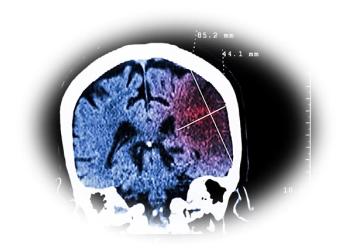
Primary Care of Stable Angina: Q & A
PCPs are effective in managing multiple risk factors at a single visit--just what the doctor ordered for the patient with angina.
Cardiology consultation and care is essential to quality of life and survival in an angina patient, but as the BARI 2D study1 demonstrated, holistic attention to myriad risk factors-smoking, cholesterol, blood pressure, weight loss, triglycerides, and elevated glucose-is associated with reduced mortality. This comprehensive approach is where the primary care provider fits in. Here are a few basic questions, answered.
How is prognosis predicted in a patient with CAD and stable angina?
Left ventricular ejection fraction is a very important variable in patients with CAD.2 The lower it is, the higher the mortality. Inability to perform an exercise test in a patient with CAD carries a negative prognosis as well.1 Although CT angiography has been applied to CAD, it overestimates the severity of disease.2
What are PCP parameters for follow up and therapy?
Make sure that the patient is taking aspirin. Cardiovascular events are 18% lower in this group on aspirin.3 Reduce blood pressure to <120/85 mmHg if possible.1 Moderate- or high-intensity statin therapy should be used to lower LDL cholesterol by at least 30%.2 When high-intensity statin therapy (a medical intervention with atorvastatin) was compared to percutaneous coronary intervention, there were fewer ischemic cardiac events in the statin group (study did not achieve significance, however).4
Medical therapy includes a combination of 2 antianginal therapies from different drug classes (beta-blockers, calcium channel blockers, or long-acting nitrates).1 A primary role for primary care is to continue to focus the patient and the family’s energy on common modifiable risk factors, such as weight loss and smoking cessation.
What is available if/when this care isn't enough?
Ranolazine has been approved for the treatment of chronic angina.1It decreases myocardial ischemia by reducing intracellular calcium through inhibition of the late sodium current.1 Personally, I would not prescribe this agent without cardiology approval and assistance.
PCPs are effective in managing multiple risk factors at a single visit. It is just what the doctor ordered for this group of patients.
References:
- Ohman EM. Clinical Practice: Chronic Stable Angina. N Engl J Med. 2016; 374:1167-1176.
- Bittner V, Bertolet M, Barraza Felix R, et al. Comprehensive cardiovascular risk factor control improves survival: the BARI 2D Trial. J Am Coll Cardiol. 2015; 66:765-763.
- Montalescot G, Sechtem U, Achenbach S, et al. 2013 ESC guidelines on the management of stable coronary artery disease: the Task Force on the management of stable coronary artery disease of the European Society of Cardiology. Eur. Heart J 2013; 34:2949-3003.
- Pitt B, Waters D, Brown WV, et al. Aggressive lipid lowering therapy compared with angioplasty in stable coronary artery disease. N Engl J Med. 1999; 341:70-76.
Newsletter
Enhance your clinical practice with the Patient Care newsletter, offering the latest evidence-based guidelines, diagnostic insights, and treatment strategies for primary care physicians.





















































































































































































































































































